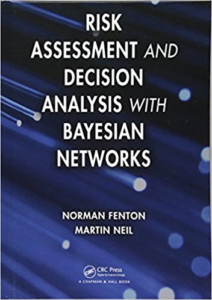An overview of Bayesian networks
Data collection and decision making are major activities across the entire healthcare domain. Healthcare professionals typically collect patients’ personal information, such as symptoms, physical characteristics and medical history to support diagnostic and therapeutic decisions.
Bayesian Networks (BNs) have been widely exploited in artificial intelligence applications. BNs are composed of two things: directed graphs and quantitative probability assignments. Directed graphs contain nodes, that correspond to uncertain variables, connected by arcs representing variable dependencies (which are often causal in nature). The quantitative probability assignments that accompany the graphical specification of a BN can represent conditional probability statements that can be learnt from data or used to encode expert opinion. The resulting BN then serves as a basis for answering probabilistic queries given knowledge about the world (evidence and facts). In the application to health care, the queries could be questions about the likelihood of a disease given symptoms or a recommendation of the best treatment. Thus, a BN essentially provides a general approach to reasoning. The model-based framework of BNs allows explainable models to be constructed and then manipulated by reasoning algorithms. This stands in contrast to data centred (or big data) approaches, where the emphasis is on prediction rather than explanation and on association rather than causal connection.
In view of its potential applications and benefits, along with the recent advances in computer algorithms, BNs have been widely adopted in many scientific and industrial applications. Diagnostic systems, gene interaction modelling and detection, quantification of causal relations in epidemiology are among the major applications of BNs in health care. The aim of the PAMBAYESIAN project is ‘personalized medicine’ using BNs, developed by combining algorithms and medical science and that tailored, using evidence about a given patient and their medical context, to better manage and improve patient health.
Preliminary knowledge
- Frequentist approach
- Bayesian approach
- Probability axioms
- Variables and probability distributions
- Joint events and marginalisation
- Conditional probability
- Bayes rule
- Chain rule
- Independence and conditional independence
- Stages in developing a medical BN
* For details please refer to the book Fenton, N.E. and M. Neil, Risk Assessment with Bayesian Networks. CRC Press, 2012.
Other authoritative references on probabilistic graphical models and (dynamic) Bayesian netowrks
- (1995) Learning Bayesian networks: The combination of knowledge and statistical data. Machine Learning, 20(3), pp 197–243.
- Pearl J. (2000) Causality: Models, Reasoning, and Inference. Cambridge University Press.
- Murphy K.P. (2002) Dynamic Bayesian Networks: Representation, Inference and Learning. University of California, Berkeley.
- Jensen F.V., Nielsen T.D. (2007) Bayesian networks and decision graphs. Springer.
- Koller D., Friedman N. (2009) Probabilistic Graphical Models: Principles and Techniques. MIT Press.




